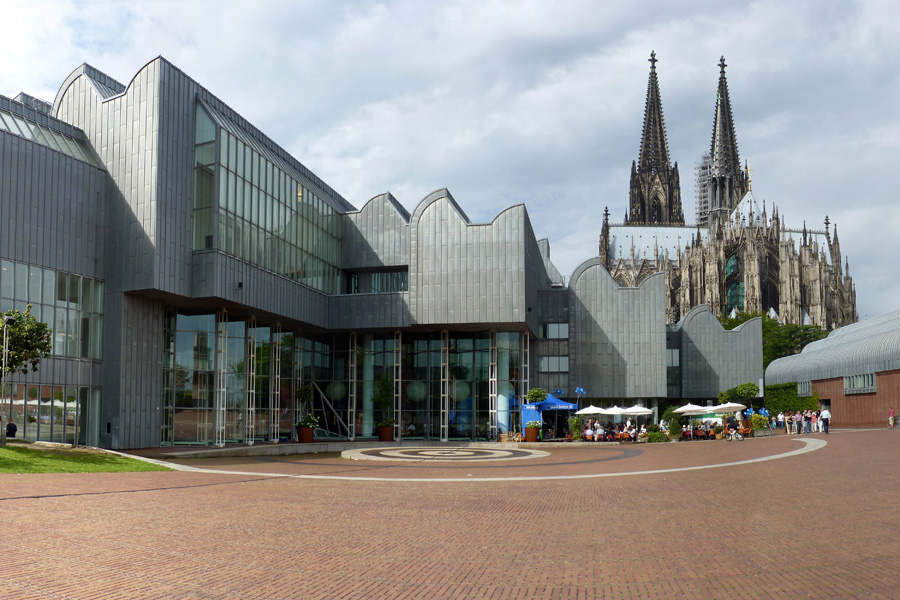On the Rhine, Cologne (German: Köln) is a cultural capital and university city enriched with more than 2,000 years of history. In Roman times Cologne was in charge of a province, and ancient vestiges bubble through the city’s surface at medieval Romanesque churches and the gripping Romano-Germanic Museum. If you love to lose yourself in a great museum for a few hours there’s enough art and history to keep you in Cologne for days. You’re going to have to be ruthless and organized just to fit a few in. And for refreshment in between the Romanesque churches and museums, Cologne is the city with the most pubs per person in Germany. Add to the mix effortlessly cool neighborhoods, a dynamic new riverside district and a celebrated cathedral and you may never want to leave. Let’s explore the best things to do in Cologne.
Best Things To Do In Cologne
1. Cologne Cathedral

Located near the left bank of the Rhine, Cologne Cathedral (Kölner Dom) is the city’s towering landmark. Officially called the Cathedral of St. Peter and St. Mary (Hohe Domkirche Sankt Petrus), this stunning edifice is a masterpiece of High Gothic architecture, and a UNESCO World Heritage Site.
One of the largest cathedrals in Europe, it was started in 1248 and is considered the most ambitious building project of the Middle Ages. As impressive as its 157-meter-tall twin towers is the cathedral’s incredible interior, a must-see when visiting this bustling city.
Covering an area of 6,166 square meters, its soaring roof supported by 56 pillars, the cathedral is filled with treasures. These include the 12th-century Reliquary of the Three Kings created by local goldsmiths; the famous relief of the Adoration of the Kings from 1440; and the impressive Treasure Chamber, with precious objects that include ancient reliquaries and manuscripts.
2. Historic Old Town Cologne

As you explore the numerous historic churches and museums of Cologne’s city center (Innenstadt), you’ll crisscross the city’s lovely Old Town (Altstadt). In addition to old churches such as Great St. Martin, you’ll find yourself traversing countless alleys lined with traditional old houses, many now home to boutique shops, galleries, cafés, and restaurants.
And with its many pleasant paths along the Rhine, you’ll find ample opportunity to enjoy great views as you plan your route through this ancient city. You’ll also find yourself in awe of the countless monuments and fountains that adorn the area, along with its Archaeological Zone, with its many ancient ruins and artifacts.
3. Cologne City Hall (Rathaus)
A particular highlight of the city’s Old Town area is Cologne’s historic City Hall, the Kölner Rathaus. The oldest such public building in Germany, it boasts a rich history dating back more than 900 years.
As the focal point of the ruling classes during medieval times, the building you see today reflects a number of different architectural influences. These include the 14th-century main building, the 15th-century tower, and a Renaissance-style loggia and cloister. Even the 20th-century influences are pleasing, as seen in the atrium.
Other City Hall highlights include the Hansasaal, or Hanseatic Hall, with its Gothic figures of eight prophets; the nine “good heroes” (pagan, Jewish, and Christian); and its sonorous carillon that plays three times each day.
4. Ludwig Museum

Exhibiting art from after 1900, the Ludwig Museum was set up in the 1980s in the modern, purpose-built complex near the cathedral.
The attraction came about during the 1970s after the Ludwigs, Peter and Irene, donated a multi-million-dollar collection of 20th-century art.
Among the many Picassos and the extensive collection of Russian Avant-Garde pieces, there are iconic examples of Pop Art, like Warhol’s “Brillo Boxes” and “Maybe” by Roy Lichtenstein.
This is all alongside the Sammlung Haubrich collection, which covers Expressionist art by Erich Heckel, Kirchner, August Macke and Karl Schmidt-Rottluff to name a few.
5. Groß St. Martin
Part of the skyline since the 12th century, Cologne would be the same without the fabulous crossing tower of Groß St. Martin.
And when this wonderful Rhenish monument was hit by bombs in the war, the reconstruction gave an opportunity to study its foundations, which go back to Roman times.
Beneath the signature trefoil chancel you can now see where the church’s walls merge seamlessly with the walls of a Roman storehouse.
The restoration lasted until the 1980s, and the church’s interior is typical of a Romanesque place of worship, with solemn architecture and understated decoration.

